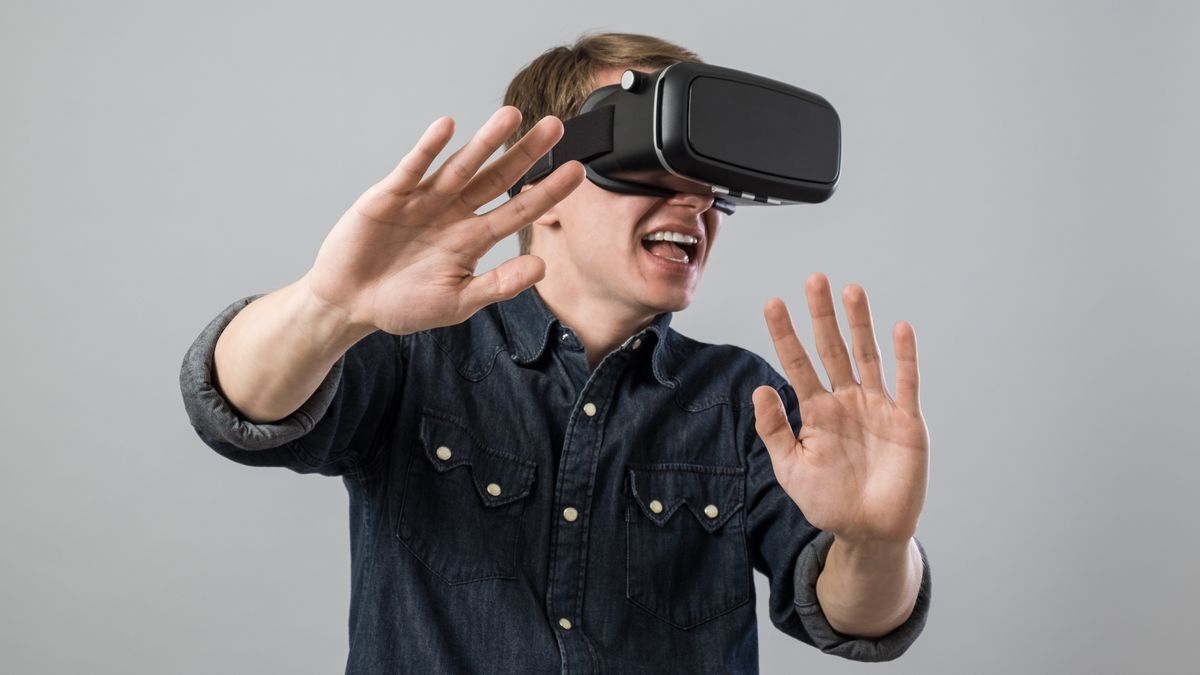Why virtual reality makes a lot of us sick, and what we can do about it.
I’m in the other camp. The first time I squeezed my 155m spaceship through the tiny mouth of a rotating space station in VR, I wept like a baby. (An Anaconda in Elite: Dangerous)
And you even have some vr fans just blindly claiming that all games should use gliding for movement and that having the option to teleport ruins the game even if they don’t use it. even though gliding (they call it natural locomotion) makes people sick because it’s obviously unnatural. They claim there is no need for movement systems that don’t induce motion sickness because it’s a matter of getting used to “natural locomotion” an anyone who doesn’t get better is because they are lying🙄.
Although with most games, the accessibility options need to be there (even when they sometimes aren’t), some games incorporate their movement mechanics into gameplay heavily. Take BONELAB for example. Great game, but simply impossible to play for some people due to the movement. Adding teleporting (or really any accessibility movement option) would simply ruin it though, as the entire game is based around physics based interactions, walking, running, jumping, climbing, etc.
Bonelab literally made me sick for hours. I tried to power through it and that’s when I realized VR wasn’t for me.
It’s a slick game…but oof…I just can’t do it.
Posted this reply in another instance, but several years ago researchers found that adding a virtual nose dramatically decreased motion sickness. However, I haven’t seen any developers adding one in games. I wonder if it’d help.
When the camera movies without me physically moving, I am throwing up immediately. Do you mean a virtual nose would fix that?
Findings showed the virtual nose allowed people using the Tuscany villa simulation to play an average of 94.2 seconds longer without feeling sick, while those playing the roller coaster game played an average of 2.2 seconds longer.
Yeah instead of throwing up immediately, you won’t throw up until 2.2 seconds in. Problem solved!
The “Tuscany Villa” is an ancient demo that I tried in the Oculus DK1 in like 2014 or so, and it made me sick for hours. It uses very fast continuous movement instead of teleport, and it has a set of stairs that will make you instantly throw up if you try to climb them.
It’s is perfectly possible to create VR experiences that will not make anyone nauseous, Moss being a good example.
So you are saying that 90s is a remarkable improvement?
I would expect a huge difference in the usefulness of a simulated nose, depending on the content. In a roller coaster the movement of your head (rotation) and the movement of the carriage (translation) are separate and clearly defined this way. You control the Rotation while the game controls the translation. I don’t know what this villa demo is, but depending on how the movement is controlled, an unintuitive and unnatural system is bound to make almost everyone nauseous.
Any app that moves the camera (or thw whole world) without user input will make people sick, it’s just a law of good VR. Any app that doesn’t render at a stable 72fps+ will make people sick. Any app that simulates things that make people sick in real life, will also make people sick in VR.
On the other hand, any app that keeps a stable 90fps, that uses teleport with a very short fade instead of thumbstick movement, and that never messes with the camera position, will not make people sick.
Most people who have tried VR and have felt sick, were basically victims of awful, non-optimized VR experiences, and awful VR hardware like Google Cardboard and variants.
I read this as “40-70% of VR developers don’t know what they are doing”. What needs to be done to avoid motion sickness has been known for a long while now.
VR is like flying cars. It’s a stupid idea that sounds cool.
deleted by creator
I know I’m not really in a virtual world. A helmet isn’t going to fool me.








